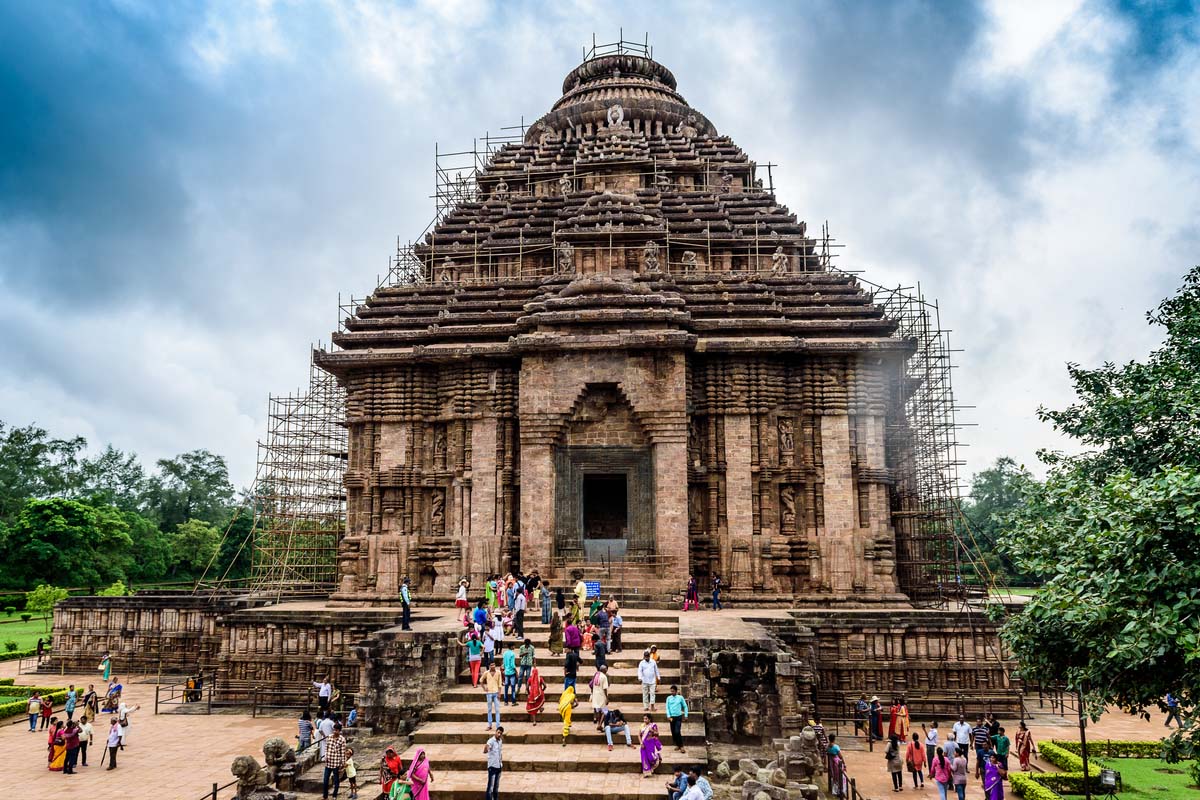Konark temple in Odisha is poised to recover its pristine glory with the decision of the Archaeological Survey of India to remove the thoroughly unsightly, if not repulsive, iron scaffoldings around the 13th century shrine.
Also referred to as the Sun Temple, it is one of the country’s primary tourist attractions. The scaffoldings had denuded its marvellous beauty since 1992, when work on the cordon sanitaire, so to speak, was initiated, eventually to cover the entire structure by 2011.
Clearly, it has taken close to three decades to complete the process of repair and reconstruction, in itself a commentary on the extent of fragility, rooted in natural decay.
Tuesday’s decision follows an inspection by the ASI on the basis of the recommendations of the Central Buildings Research Institute. Given the partially decrepit condition of most monuments under the ASI’s care, it is fervently to be hoped that an alternative plan of action to protect the stones and exquisite carvings will soon be formulated.
In a sense, the ASI has responded to a long-standing demand of the Odisha government to remove the scaffoldings, which given the sluggish progress of reconstruction, were in a state of “present continuous”.
Chiefly, it obstructed a close look at and appreciation of the temple’s art work. It has intrinsically been an object of beauty and joy to uphold, its striking feature being the absence of a sanctum sanctorum and religious connotation. Going by legend, the British had between 1900 and 1903 filled up the Sun Temple with sand to prevent the monument from collapsing.
It isn’t a home of the gods, and this primarily explains why it has historically been free from the activities of sevayats and pandas. It also explains why religion is no bar for entry to the Konark complex… so very unlike the Jagannath Temple in Puri and certain shrines in Bhubaneswar that are reserved only for Hindus.
Since the 13th century, Konark has stood in splendid isolation, a monument of archaeological beauty.
Having signalled its intent to remove the scaffoldings, the ASI ought now to complete the task within the time-frame of 60 days.
To use the language of the metaphor, Konark has been shackled long enough. Its beauty is etched in stone, and it must be freed. Nothing , just nothing, must stand between the Sun Temple and the visitor.
It is also referred to as the Black Pagoda because of the colour of its tower. Ergo, the operation to remove the scaffoldings cannot afford to be sluggish in the manner of restoration, as it has been thus far and to the detriment of tourism in an investor-friendly state. Awarded the World Heritage tag in 1984, the monument must live up to its appellation.












